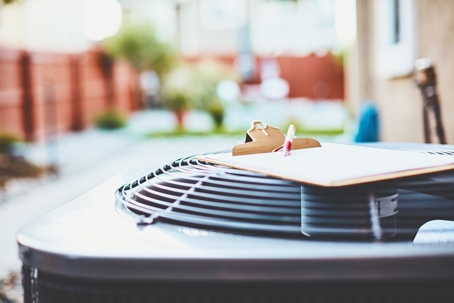While it’s best to call a certified technician to service your HVAC unit, you’ll want some basic knowledge of your system’s components to help keep it operating smoothly and to identify small problems before they turn into larger ones. Here are six key parts of your HVAC system to familiarize yourself with.
Thermostat
Your thermostat is your HVAC unit’s command and control center. Your thermostat’s control panel allows you to set the desired temperature for your home, and the thermostat’s sensors send signals to the HVAC unit to turn on or off. Thermostats come in manual or programmable models. Programmable thermostats help you to save money on your power bills by letting you select temperature settings that automatically adjust when you leave or return to your home.
You could also opt for a wifi thermostat which will allow you to adjust your thermostat’s settings directly from your phone. This comes in handy if you leave for vacation and realize you never changed your temperature setting.
Filters
Besides keeping your home cool in the summer and warm in the winter, your HVAC unit is also responsible for maintaining the indoor air quality in your home. Air filters reduce the presence of irritating contaminants such as pet dander, dust, and pollen in your home. These airborne particulates can also harm sensitive HVAC equipment, and installing fresh filters helps to extend the life of your HVAC unit.
Ductwork
Heating and cooling your home involves transporting air indoors and outdoors through a connected system of ducts. Ducts allow your HVAC system to pull stagnant air into the unit and push out clean, conditioned air into your home. Leaky ducts lead to higher utility bills and a shortened lifespan for your HVAC system since your unit must work harder to maintain the thermostat’s set indoor temperature. Ducts can leak if they have tears or if they have been improperly installed.
Combustion Chamber
Your HVAC unit needs more than just fuel to begin heating your home. It needs to mix a small amount of air with a fuel source to start the process. This combination takes place in your HVAC’s combustion chamber.
Heat Exchanger
After heat is generated in your HVAC’s combustion chamber, it gets absorbed by the heat exchanger. The heat exchanger takes in cool air from your home and warms it based on your thermostat’s settings. This component is designed to withstand very high temperatures without incurring damage. However, heat exchangers do succumb to cracks via regular wear and tear. A damaged heat exchanger is something that needs immediate attention since it can lead to carbon monoxide poisoning.
External Unit
Your HVAC’s external unit is the component that sits outside. It works year-round to facilitate home heating and cooling. During the cooling process, hot air flows to the cold refrigerant in your HVAC system. The refrigerant heats up and turns from liquid to vapor. The vaporized refrigerant flows to the external unit where the compressor heats it above the ambient outside temperature. The heat is released from the refrigerant into the outdoor air. The refrigerant returns indoors to repeat the process. When your HVAC unit is in heating mode, the external unit picks up outdoor air to create heat for your home instead of releasing heat outdoors.
Bottom line: Your HVAC unit is a complex system of electromechanical components that work together to deliver comfortable indoor air year-round. A problem with one component can lead to serious issues with others. For quality HVAC repairs in and around Dallas, contact Hedrick's Service Now at (214) 509-6029. We specialize in repairing, maintaining, and replacing HVAC units of all makes and models.
